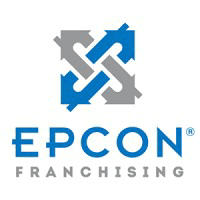Not sure if Hommati is right for you?
Talk to a Franchise Advisor who can match you with your perfect franchise based on your goals, experience, and investment range.
Talk to an Expert
Hommati
How much does Hommati cost?
Initial Investment Range
$69,364 to $79,973
Franchise Fee
$46,350
The franchised business is providing real estate and marketing services to real estate agents, brokers, business owners, contractors, engineering firms, property managers or authorized representatives of commercial real estate, apartment complexes, land, resorts, vacation properties and rentals.
Enjoy our partial free risk analysis below
Unlock the full risk analysis to access 9 more categories covering 100+ risks.
Hommati January 10, 2025 FDD Risk Analysis
Free FDD Library AI Analysis Date: July 16, 2025
DISCLAIMER: Not Legal Advice - For Informational Purposes Only. Consult With Qualified Franchise Professionals.
Franchisor Stability Risks
Start HereDisclosure of Franchisor's Financial Instability
High Risk
Explanation
The franchisor, Hommati Franchise Network, Inc. (HFN), has disclosed significant, recurring net losses for the past three fiscal years and declining stockholders' equity, as shown in its audited financial statements. Due to its financial condition, a state regulator has required HFN to post a surety bond. This financial instability could impact its ability to support you, invest in the brand, and fulfill its obligations, posing a substantial risk to your investment.
Potential Mitigations
- Having an experienced franchise accountant thoroughly analyze the financial statements, including all footnotes and cash flow statements, is essential.
- You should discuss the implications of the franchisor's recurring losses and the state-required surety bond with your attorney.
- A business advisor can help you assess whether the franchisor has a viable plan to achieve profitability and support its franchisees.
High Franchisee Turnover
High Risk
Explanation
Item 20 data reveals a high rate of franchisee exits over the last two fiscal years, including a significant number of non-renewals and terminations. The annual franchisee turnover rate appears to be over 15%, which may indicate systemic issues such as franchisee dissatisfaction, lack of profitability, or insufficient support. This trend represents a major risk to the stability and long-term health of the franchise system.
Potential Mitigations
- It is critical to contact a significant number of former franchisees from the list in Exhibit D-2 to understand their reasons for leaving.
- Discussing the high turnover rates directly with the franchisor and evaluating the plausibility of their explanations is an important step for your business advisor.
- Your attorney can help you understand any patterns in the exits and assess the potential risks to your own success.
Rapid System Growth
Low Risk
Explanation
This risk was not identified in the FDD package. The franchise system has experienced a net decrease in the number of franchised outlets over the past two years, not rapid growth. Generally, when a system grows too quickly, a franchisor's support infrastructure can be strained, potentially leading to inadequate training and assistance for new franchisees.
Potential Mitigations
- A business advisor can help evaluate if the franchisor's support systems are appropriately scaled for its current size.
- Inquiring with your attorney about the legal implications of a shrinking system is a prudent step.
- An accountant can help analyze if the franchisor's financial model is sustainable given the recent trends in unit count.
New/Unproven Franchise System
Medium Risk
Explanation
The franchisor has been operating since 2017 and has over 100 outlets, so it is not a brand-new startup. However, the system's history of significant financial losses and high franchisee turnover raises questions about the long-term viability and profitability of the business model. This suggests the concept may not be fully proven, which could increase your investment risk.
Potential Mitigations
- Conducting extensive due diligence by speaking with a wide range of current franchisees about the model's profitability is crucial.
- Your business advisor should help you evaluate the franchisor's strategies for achieving profitability and reducing franchisee turnover.
- An accountant's review of the financial trends can provide deeper insight into the system's long-term stability.
Possible Fad Business
Low Risk
Explanation
This risk was not identified. The franchise provides technology-based marketing services to the real estate industry. While specific technologies evolve, the underlying need for property marketing is well-established and not considered a fad. A fad business is one based on a short-lived trend, which can create significant risk when consumer interest disappears, leaving franchisees with a non-viable business.
Potential Mitigations
- A business advisor can help assess the long-term market demand for the specific services offered.
- It is wise to research technological trends in real estate marketing to understand the competitive landscape.
- Discussing the franchisor's plans for innovation and adaptation with them to gauge their long-term vision.
Inexperienced Management
Low Risk
Explanation
This risk was not identified. The key executives listed in Item 2 appear to have substantial prior experience in the franchising industry, as detailed further in Item 11. Inexperienced management can be a significant risk, as it may lead to poor strategic decisions, weak operational systems, and inadequate support for franchisees.
Potential Mitigations
- Thoroughly vet the backgrounds of the key management team with your business advisor.
- During discussions with current franchisees, inquire about their perception of the management team's competence and support.
- Your attorney can help you understand the implications of management's role as described in the franchise agreement.
Private Equity Ownership
Low Risk
Explanation
This risk was not identified, as Item 1 indicates the franchisor does not have a parent company. When a franchisor is owned by a private equity firm, there can be a risk that decisions are driven by short-term financial returns for investors rather than the long-term health of the franchise system, potentially affecting franchisee support and costs.
Potential Mitigations
- It is always good practice to confirm the franchisor's ownership structure with your attorney.
- Researching the track record of any parent company with other franchise systems they own can be a valuable step for a business advisor.
- Discussing any changes in ownership or company philosophy with current franchisees is important.
Non-Disclosure of Parent Company
Low Risk
Explanation
This risk is not present in the FDD. The franchisor explicitly states in Item 1 that it has no parent company. Failing to disclose a parent company can be a serious issue, as it may obscure the true financial backing, control structure, and potential risks associated with the franchise system.
Potential Mitigations
- Your attorney can verify the corporate structure and confirm the absence of an undisclosed controlling parent entity.
- An accountant can assess if the franchisor's capitalization appears adequate on a standalone basis.
- Engaging a business advisor to research the company's public records can provide additional assurance.
Predecessor History Issues
Low Risk
Explanation
This risk was not identified, as the franchisor states in Item 1 that it has no predecessors. When a franchisor has acquired a business from a predecessor, it's important to investigate the predecessor's history for issues like litigation, bankruptcy, or high franchisee failure rates, as these could indicate inherited problems within the system.
Potential Mitigations
- Your attorney should confirm the franchisor's history and lack of predecessors.
- Independent research into the brand's history, assisted by a business advisor, can uncover any unmentioned prior entities.
- Asking long-term franchisees about the history of the system can provide valuable context.
Pattern of Litigation
Low Risk
Explanation
This risk was not identified. Item 3 of the FDD states that there is no litigation that requires disclosure. A pattern of lawsuits, particularly those initiated by franchisees alleging fraud or misrepresentation, can be a major red flag indicating systemic problems with a franchisor's practices or the viability of its system.
Potential Mitigations
- Your attorney can conduct independent legal research to verify the absence of material litigation.
- Inquiring with current and former franchisees about any disputes they may have had is a prudent due diligence step.
- A business advisor can help assess if the franchisor's operational practices seem designed to avoid conflict.
Disclosure & Representation Risks
Example Risk: Franchisee Financial Obligations
Blue Risk
Explanation
This risk involves the financial obligations that a franchisee must meet, including initial fees, ongoing royalties, and other required payments. Understanding these obligations is crucial for long-term success.
Potential Mitigations
- Carefully review the Franchise Disclosure Document (FDD) and consult with a franchise attorney to fully understand all financial commitments before signing.
- Conduct regular risk assessments
- Implement monitoring and reporting systems
Unlock Full Risk Analysis
Purchase the complete risk review to see all 102 risks across all 10 categories.
Financial & Fee Risks
Example Risk: Franchisee Financial Obligations
Blue Risk
Explanation
This risk involves the financial obligations that a franchisee must meet, including initial fees, ongoing royalties, and other required payments. Understanding these obligations is crucial for long-term success.
Potential Mitigations
- Carefully review the Franchise Disclosure Document (FDD) and consult with a franchise attorney to fully understand all financial commitments before signing.
- Conduct regular risk assessments
- Implement monitoring and reporting systems
Unlock Full Risk Analysis
Purchase the complete risk review to see all 102 risks across all 10 categories.
Legal & Contract Risks
Example Risk: Franchisee Financial Obligations
Blue Risk
Explanation
This risk involves the financial obligations that a franchisee must meet, including initial fees, ongoing royalties, and other required payments. Understanding these obligations is crucial for long-term success.
Potential Mitigations
- Carefully review the Franchise Disclosure Document (FDD) and consult with a franchise attorney to fully understand all financial commitments before signing.
- Conduct regular risk assessments
- Implement monitoring and reporting systems
Unlock Full Risk Analysis
Purchase the complete risk review to see all 102 risks across all 10 categories.
Territory & Competition Risks
Example Risk: Franchisee Financial Obligations
Blue Risk
Explanation
This risk involves the financial obligations that a franchisee must meet, including initial fees, ongoing royalties, and other required payments. Understanding these obligations is crucial for long-term success.
Potential Mitigations
- Carefully review the Franchise Disclosure Document (FDD) and consult with a franchise attorney to fully understand all financial commitments before signing.
- Conduct regular risk assessments
- Implement monitoring and reporting systems
Unlock Full Risk Analysis
Purchase the complete risk review to see all 102 risks across all 10 categories.
Regulatory & Compliance Risks
Example Risk: Franchisee Financial Obligations
Blue Risk
Explanation
This risk involves the financial obligations that a franchisee must meet, including initial fees, ongoing royalties, and other required payments. Understanding these obligations is crucial for long-term success.
Potential Mitigations
- Carefully review the Franchise Disclosure Document (FDD) and consult with a franchise attorney to fully understand all financial commitments before signing.
- Conduct regular risk assessments
- Implement monitoring and reporting systems
Unlock Full Risk Analysis
Purchase the complete risk review to see all 102 risks across all 10 categories.
Franchisor Support Risks
Example Risk: Franchisee Financial Obligations
Blue Risk
Explanation
This risk involves the financial obligations that a franchisee must meet, including initial fees, ongoing royalties, and other required payments. Understanding these obligations is crucial for long-term success.
Potential Mitigations
- Carefully review the Franchise Disclosure Document (FDD) and consult with a franchise attorney to fully understand all financial commitments before signing.
- Conduct regular risk assessments
- Implement monitoring and reporting systems
Unlock Full Risk Analysis
Purchase the complete risk review to see all 102 risks across all 10 categories.
Operational Control Risks
Example Risk: Franchisee Financial Obligations
Blue Risk
Explanation
This risk involves the financial obligations that a franchisee must meet, including initial fees, ongoing royalties, and other required payments. Understanding these obligations is crucial for long-term success.
Potential Mitigations
- Carefully review the Franchise Disclosure Document (FDD) and consult with a franchise attorney to fully understand all financial commitments before signing.
- Conduct regular risk assessments
- Implement monitoring and reporting systems
Unlock Full Risk Analysis
Purchase the complete risk review to see all 102 risks across all 10 categories.
Term & Exit Risks
Example Risk: Franchisee Financial Obligations
Blue Risk
Explanation
This risk involves the financial obligations that a franchisee must meet, including initial fees, ongoing royalties, and other required payments. Understanding these obligations is crucial for long-term success.
Potential Mitigations
- Carefully review the Franchise Disclosure Document (FDD) and consult with a franchise attorney to fully understand all financial commitments before signing.
- Conduct regular risk assessments
- Implement monitoring and reporting systems
Unlock Full Risk Analysis
Purchase the complete risk review to see all 102 risks across all 10 categories.
Miscellaneous Risks
Example Risk: Franchisee Financial Obligations
Blue Risk
Explanation
This risk involves the financial obligations that a franchisee must meet, including initial fees, ongoing royalties, and other required payments. Understanding these obligations is crucial for long-term success.
Potential Mitigations
- Carefully review the Franchise Disclosure Document (FDD) and consult with a franchise attorney to fully understand all financial commitments before signing.
- Conduct regular risk assessments
- Implement monitoring and reporting systems
Unlock Full Risk Analysis
Purchase the complete risk review to see all 102 risks across all 10 categories.











